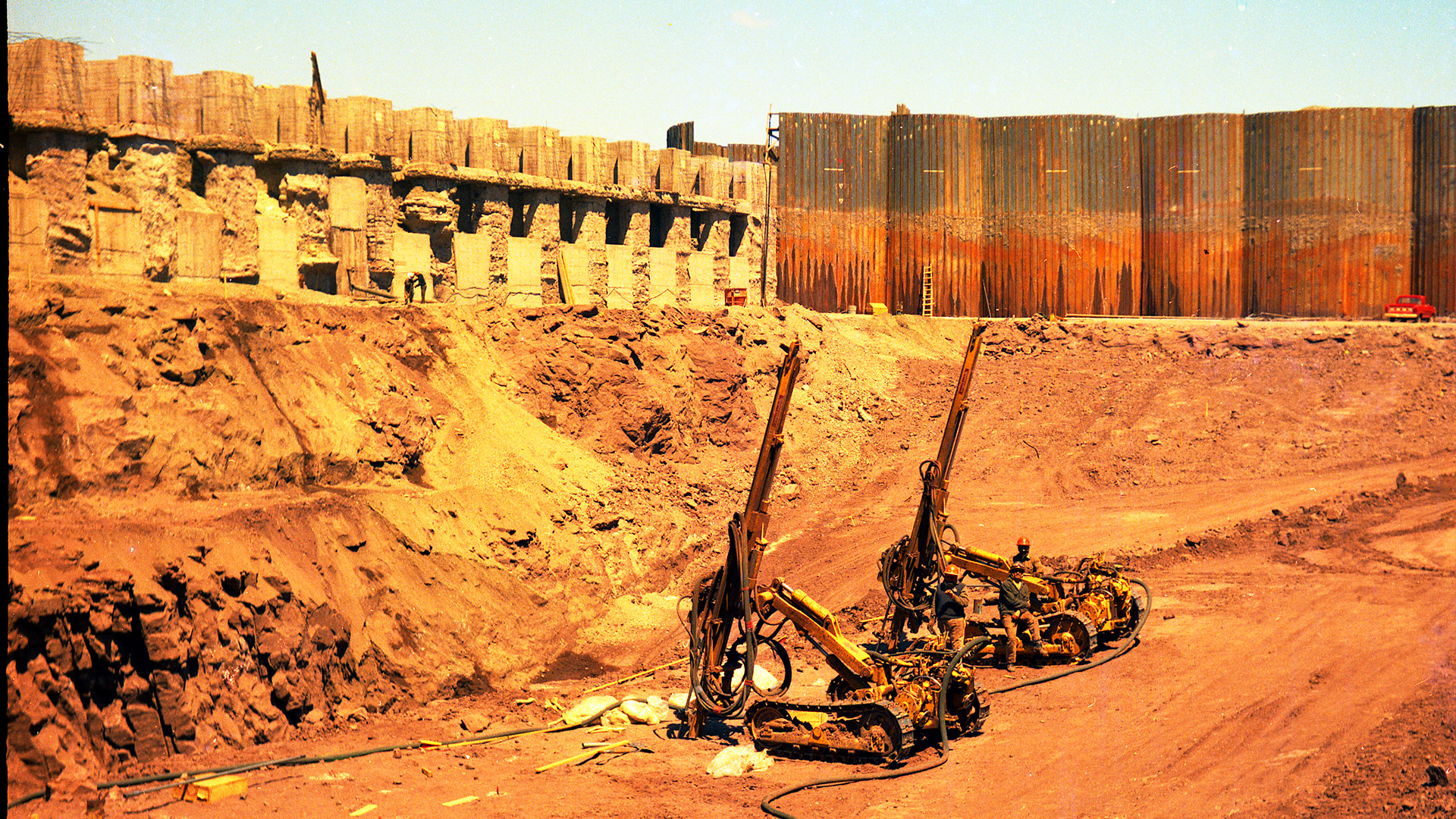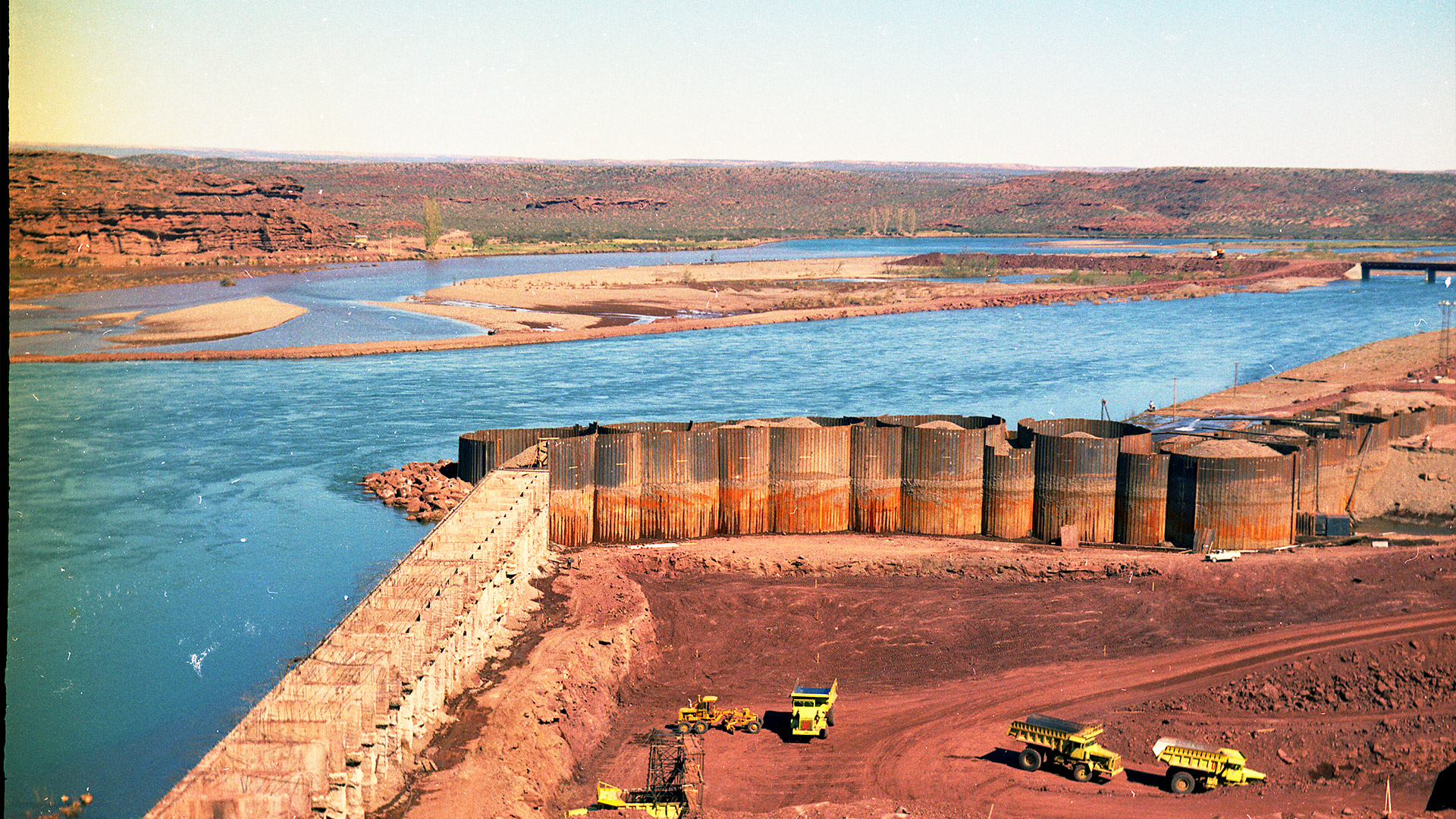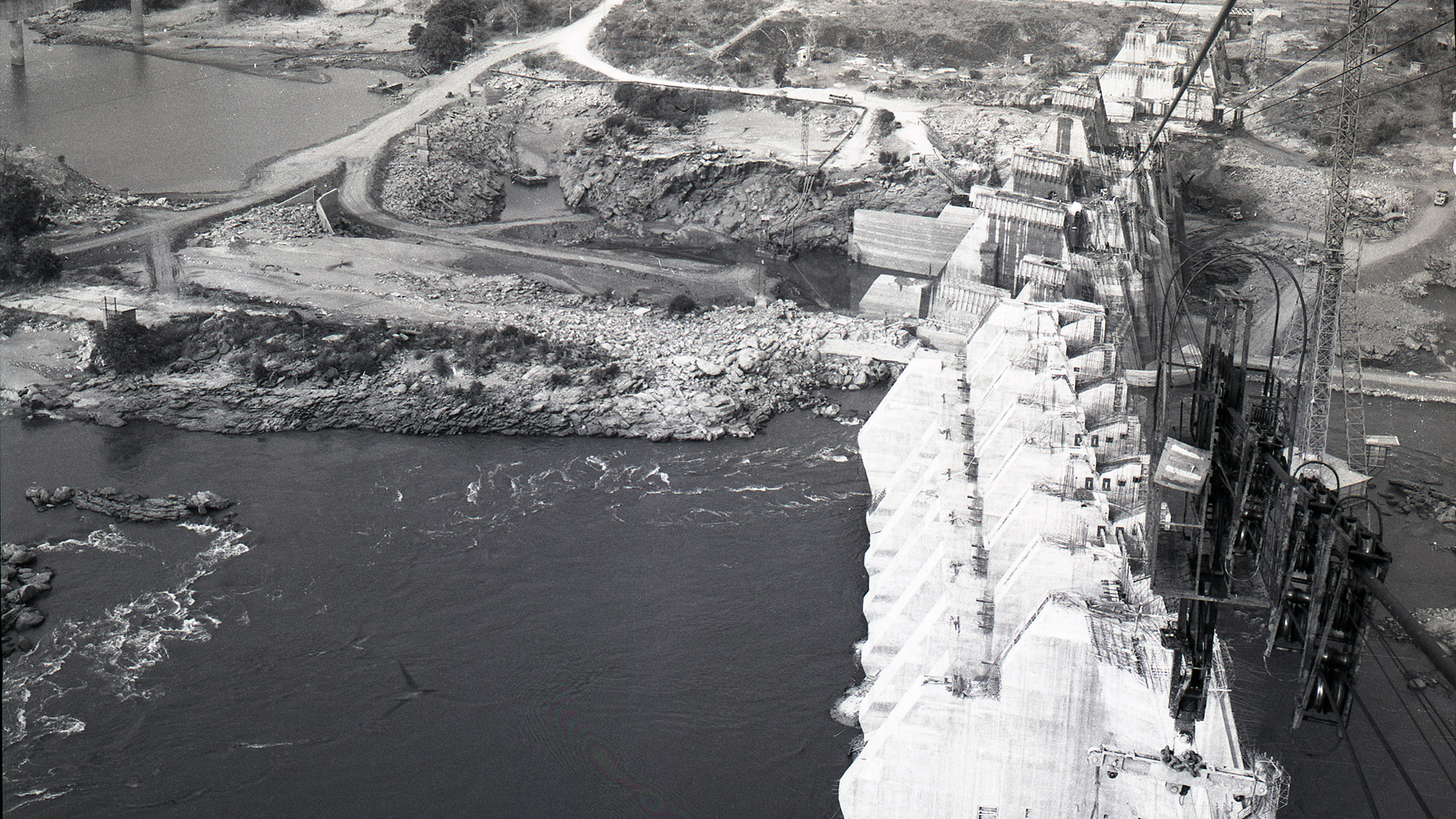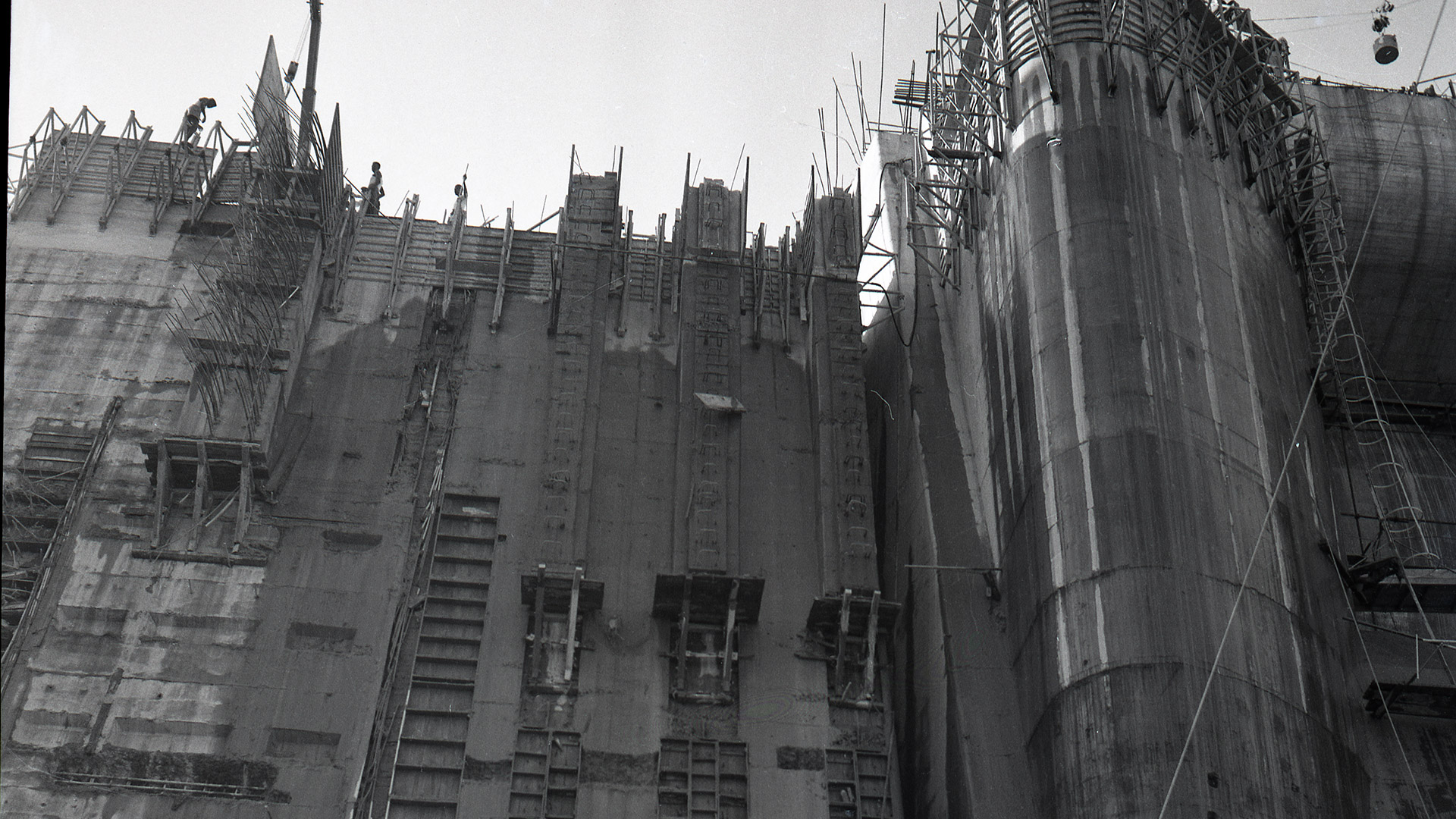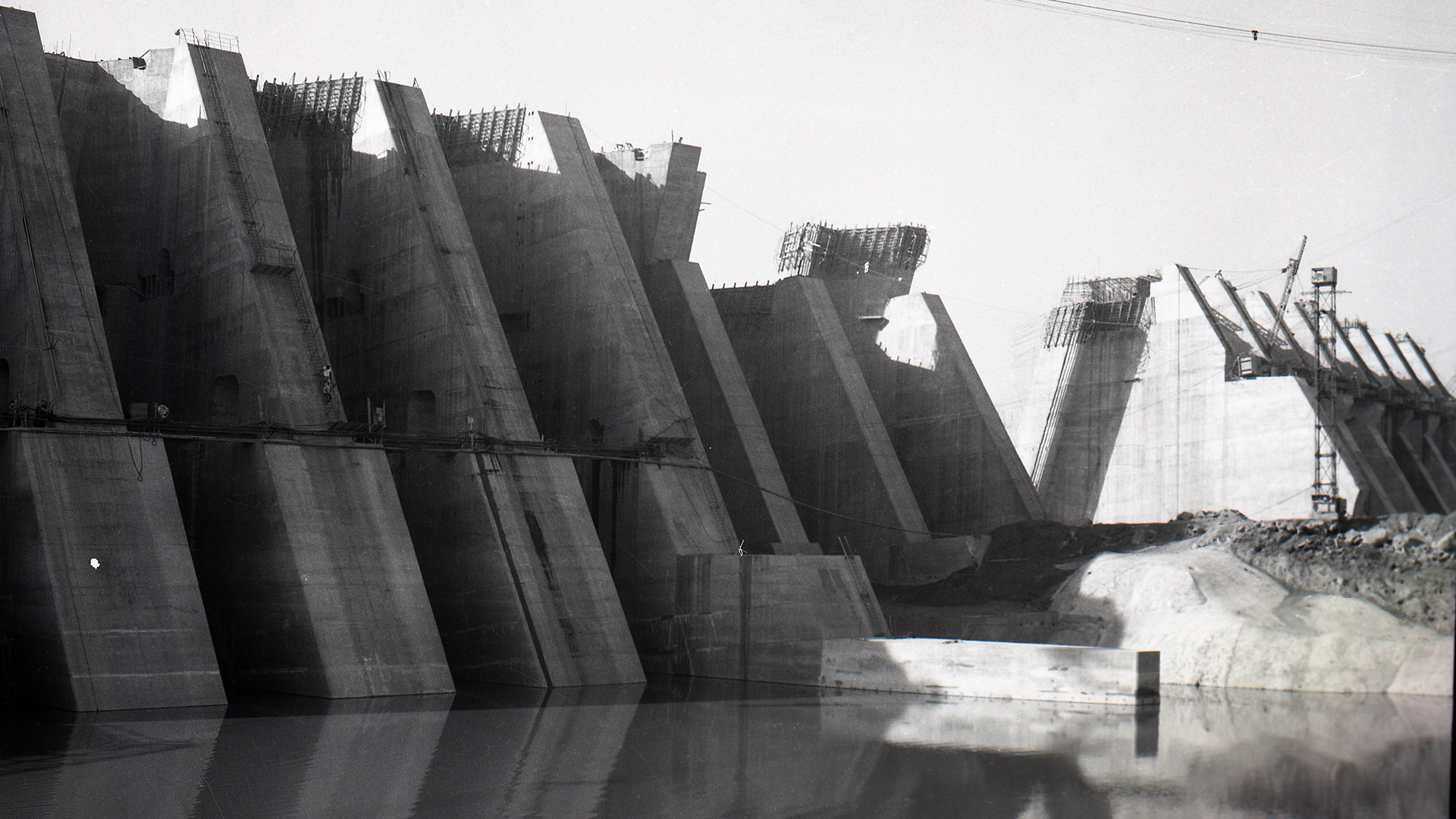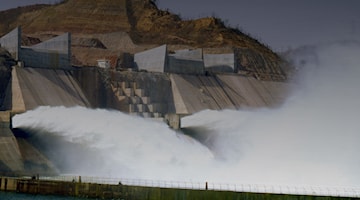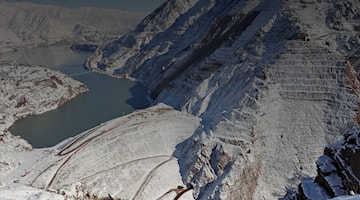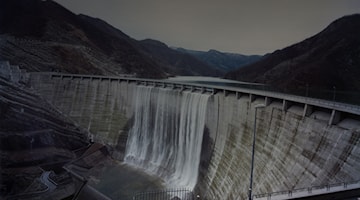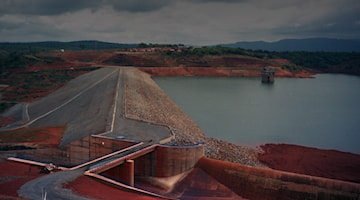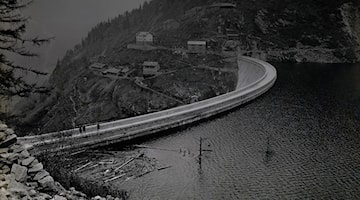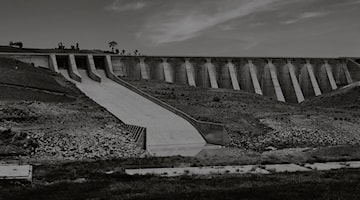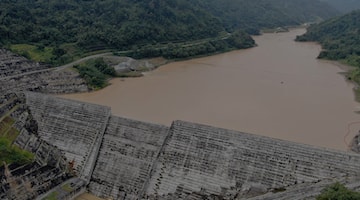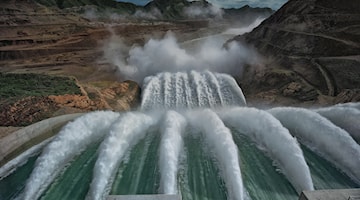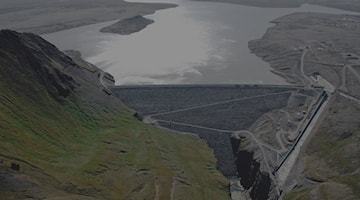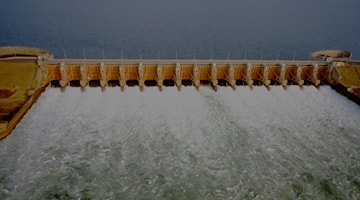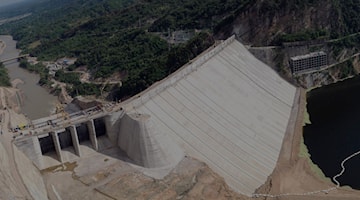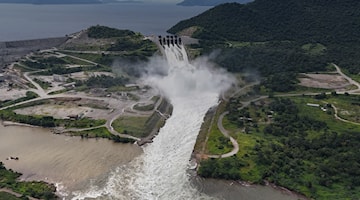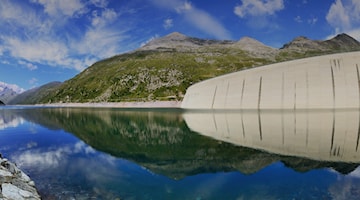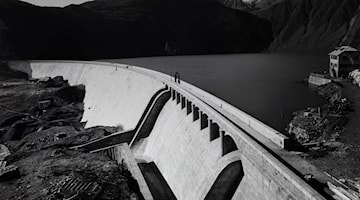Roseires Dams, Sudan
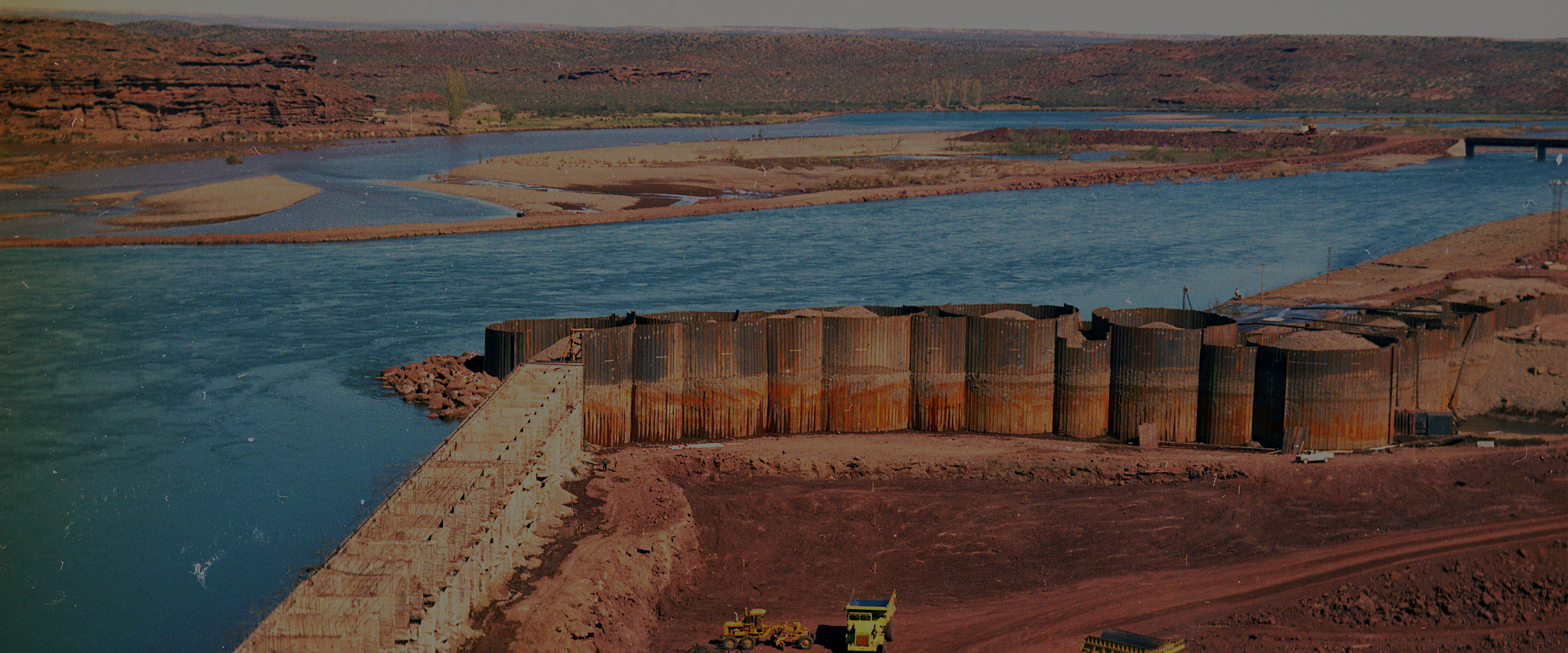
ROSEIRES DAMS, SUDAN
In 1959, following an agreement between the Nile riparian countries, Sudan decided to build a dam on the Blue Nile near the village of Roseires. The aim was to create a reservoir with a capacity of 4 billion cubic metres of water, both for power generation and for irrigation of 320,000 hectares of farmland.
The project, which was completed a year early in 1966, involved the construction of a dam almost 14 km long. The central part, about 1 km long, includes the intake structures for the Dinder and Kenana irrigation canals, as well as the bottom and surface drains and the foundations for a future hydroelectric power station.
The main difficulties during construction have been caused by the seasonal rains, which begin between June and July, and the subsequent flooding of the Blue Nile (between August and September), which reaches enormous flow rates of over 10,000 m3/sec. Despite these challenges, the project was successfully completed, creating a reservoir some 75 km long with a usable capacity of 3 billion m3 of water.
As well as being a major engineering achievement, the Roseires Dam has made a fundamental contribution to the countries bordering the Nile. It has had a significant impact on Sudan's economy, improving agricultural production through irrigation and providing a stable source of renewable energy.
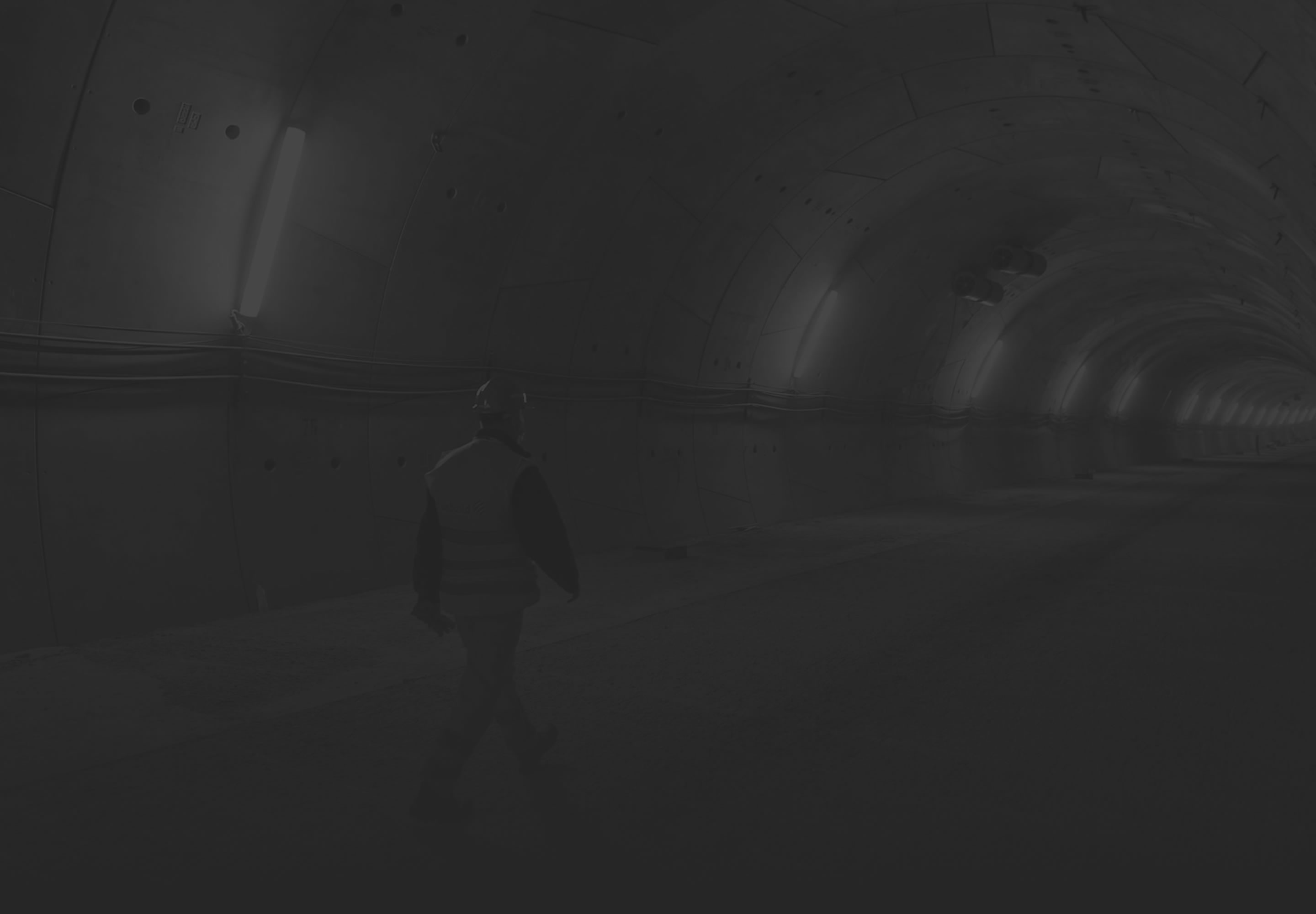
THE WORK AND THE TECHNIQUE
M³ EXCAVATION
M³ CONCRETE
M³ EMBANKMENTS
Ministry of Irrigation and Hydroelectric Power – Khartoum (Sudan)





